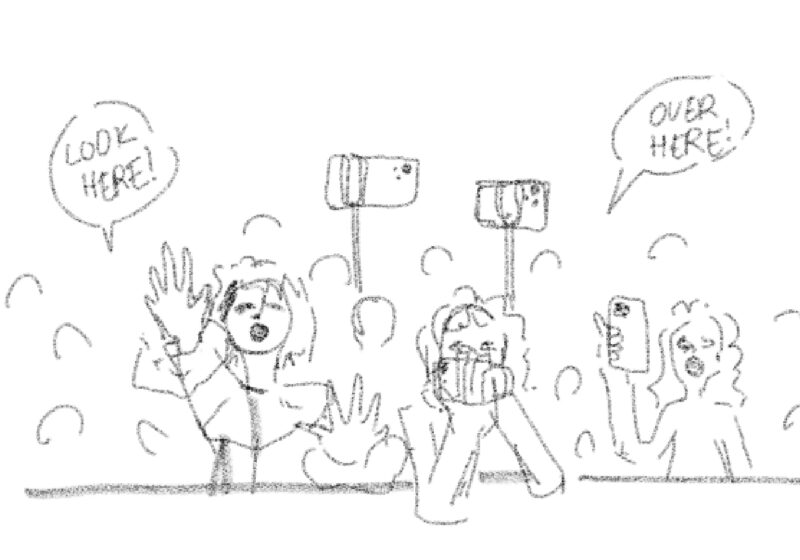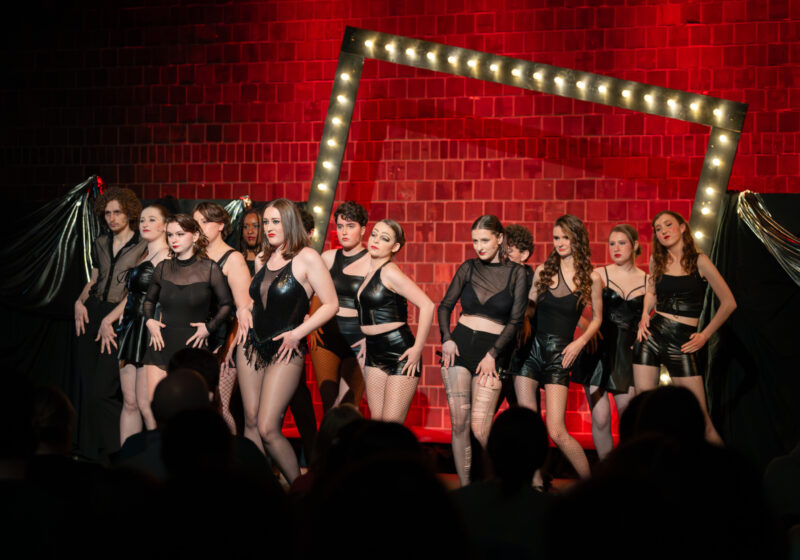The Eastman Studio Orchestra gave its annual concert to an interested and sizeable crowd On March 19 in the Eastman Theatre. Legendary jazz trombonist Bob Brookmeyer was the featured artist and the concert showcased a composition by him, as well as two jazz standards, one featuring Brookmeyer and the other featuring tenor saxophone soloist Brian VanArsdale. The Eastman Studio Orchestra is an ensemble that combines the Eastman School Symphony Orchestra with the Eastman Jazz Ensemble and the resulting sound of these two groups playing together is quite unique. The strings, classy and nostalgic, even schmaltzy at times, provided warmth and color to the jazz band that seemed appropriate for 1940s jazz ballads and pops music – think Henry Mancini. The first piece, ‘Spiral Song’ by Russell Scarbrough, was a chance for VanArsdale to showcase his sweet tone and comprehensive jazz chops. The Studio Orchestra sounded slightly apprehensive, however, working through the typical five-minute period of concert anxiety. By the time Brookmeyer stepped onstage, everyone seemed to settle into a groove and relax. Brookmeyer’s warm tone filled the Eastman Theatre beautifully on a chart he made famous, ‘The Best Things in Life Are Free.’ He sang through his signature valve trombone. The core of the concert, however, was Brookmeyer’s composition, ‘Suite for Orchestra and String Quartet,’ which added to the already unusual combination of instruments onstage. The suite consisted of five movements played attacca – ‘Fanfares and Folksongs,’ ‘American Beauty,’ ‘Frolics,’ ‘A Tune’ and ‘Wood Dance.’ There were obvious elements of folksongs present throughout the piece, as much of the thematic material was suggestive of Irish and Japanese folk music, all of which was very lamenting and sad. Brookmeyer’s writing was moving at times, with some sections sounding so painful and eerie that they drew comparisons to Shostakovich. The comparisons stop there. Unlike the genius of Shostakovich, this composition lacked direction and meaning. It seemed that as soon as the music was starting to head somewhere intense and interesting, the drama was ruined by a sudden change in character, reverting back to the style and sound of an average high school jazz chart. As the piece labored on, it became apparent that Brookmeyer’s music really didn’t know what it was trying to be at all. For starters, it’s hard for me to take music seriously when a laid back feel is being clocked out by brushes on a drum set. Not to mention that every time the strings had a melody, the writing seemed reminiscent of the 1970 soundtrack to ‘Love Story.’ Also not helping the corniness factor of the piece were the many interjections of very clich, archetypal lines that were written for each instrument – the kind of example of sound and style an instrument would play at a children’s concert. You know the deal – the trombone does a loud glissando, the piccolo does a high trill, the percussionist rolls his mallet down a line of chimes. These many interjections by each instrument family are part of something that I like to call “contrived musicality.” These are contrived moments in music that in reality have no direction or intention and whose effect isn’t true musicality at all, just very stereotypical musical gestures.The string quartet, comprised of Mark Woodyatt and Emily Schmitz on violin as well as Gregory Mach on viola and Kirtsen Cassel on cello, played exceptionally well together. Each member of the quartet had solos throughout the piece, and all were very well done and musical. For the most part, each section of the Studio Orchestra played very well individually, but when it came time for the jazz band, orchestra and string quartet to play altogether, it was apparent that this grouping of musicians doesn’t perform together on a regular basis.Overall, a lot of factors go into why the concert turned out to be disappointing for this very talented group of musicians. I don’t think that the Studio Orchestra is a bad idea, and I hope that it continues to perform annually. I just think that the music a group like this plays should be carefully chosen, as it is easy for the group sound to become almost a caricature or satire in its feel. The best example of a group doing mixed jazz band and orchestra music successfully today is the Lincoln Center Jazz Orchestra and their collaborations with today’s top orchestras. However, with some lessons learned and possibly some programmatic tweaking, the Studio Orchestra definitely has the potential to join the ranks of the many other highly regarded ensembles at Eastman.Levy can be reached atjlevy@campustimes.org.
Facilities
Campus roadways getting a fresh coat of paint
Campus roadways will be getting new paint stripes — including all double yellow, cross walks, stop lettering, and parallel parking…
culture
Notes by Nadia: What’s wrong with being a fan?
I wish that people would just mind their business and stop acting like being a fan of an artist is “weird.”
musical
ROC Players’ “Chicago” is Criminally Good
The rise to the spotlight is no easy journey, especially when you’ve got blood on your hands and a life…





